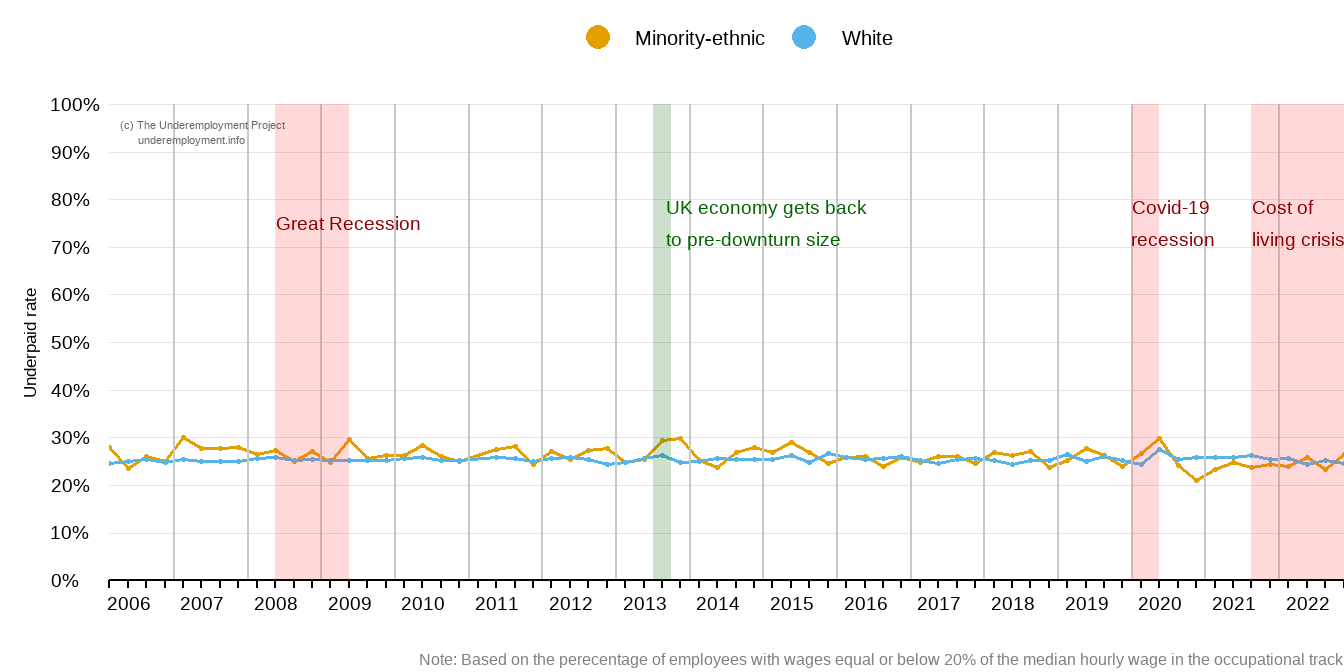3.3 Wage-related underemployment by ethnic group
Figure 3.3 shows the rate of underpayment among employees according to their ethnic group. Overall, the gap is not large, though the proportion of underpaid minority-ethnic employees is slightly higher than the white majority employees for most periods. Even the small differences reduced after the Covid-19 pandemic hit.

FIGURE 3.3: The proportion of underpaid minority-ethnic employees is slightly higher than their white counterparts